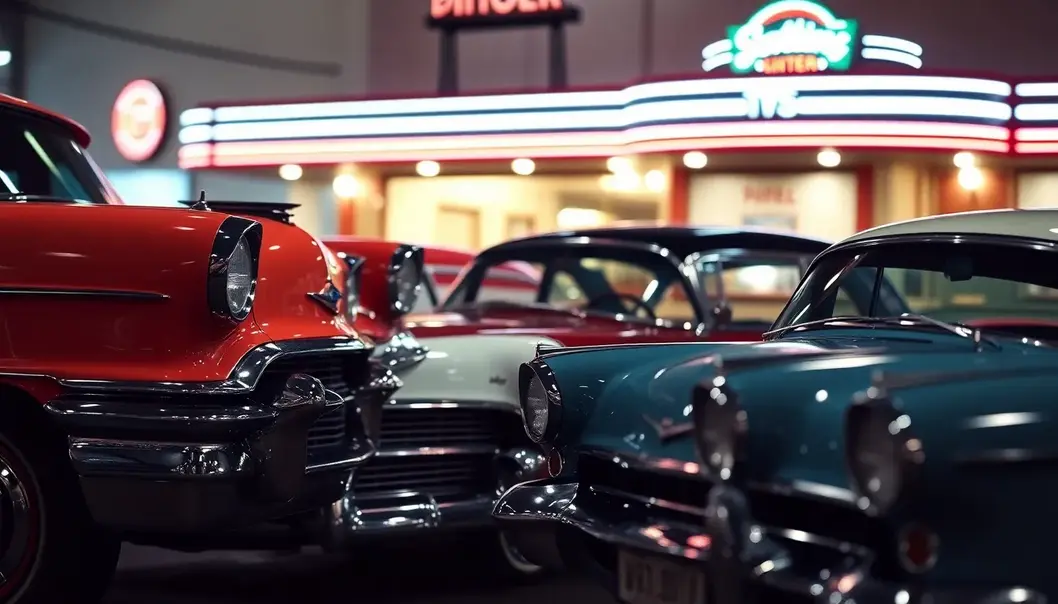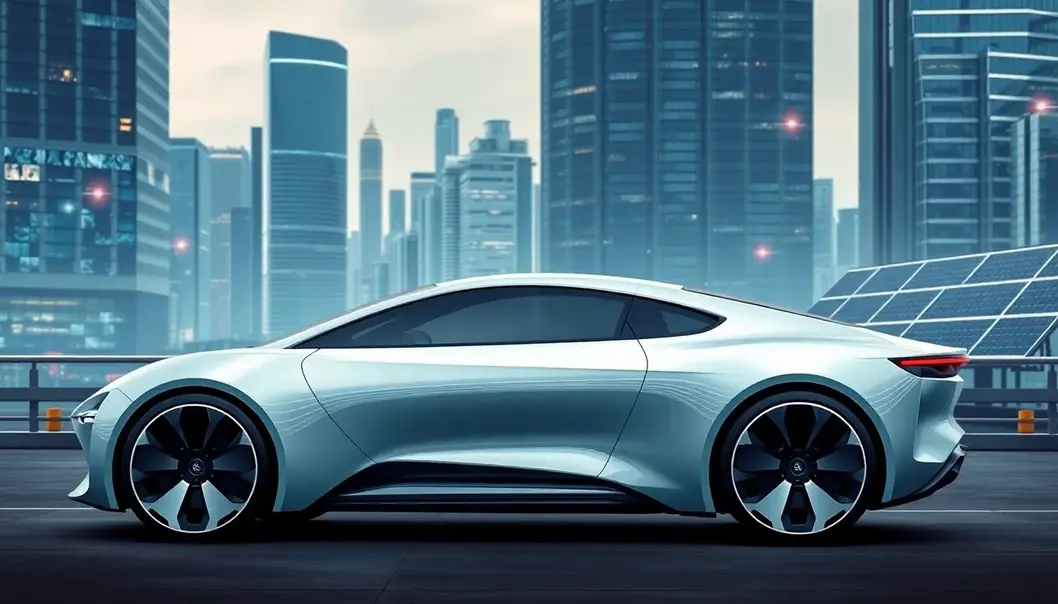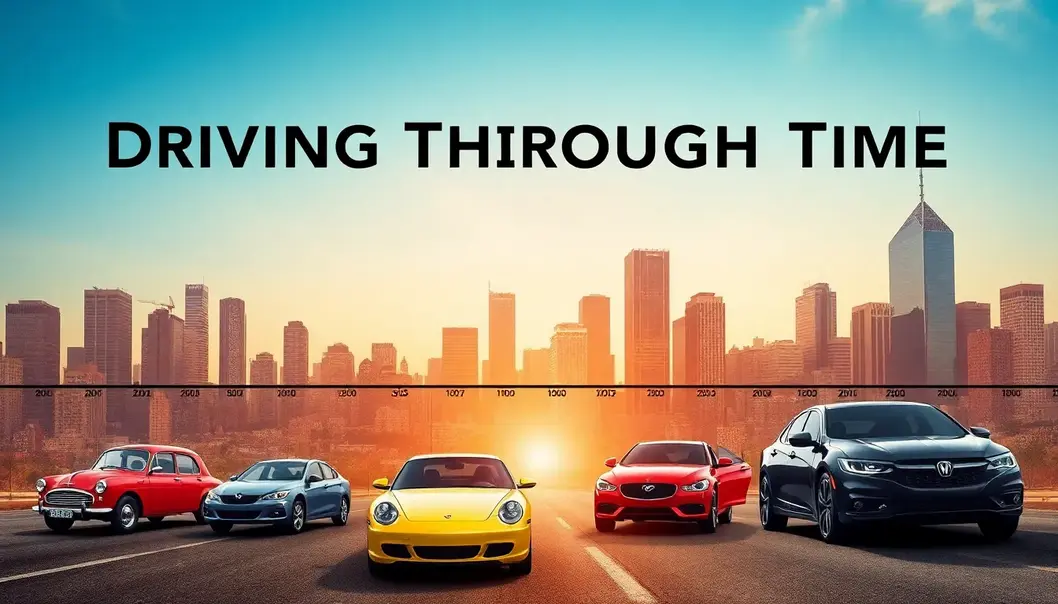From rumbling jalopies of the past to today’s sleek tech-savvy machines, car design has undergone a fascinating metamorphosis. What was once a mere mode of transport has turned into an emblem of technological progress, personal freedom, and status. Cars tell stories not just about engineering advancements, but also about cultural shifts and emerging lifestyles. As we cruise through decades of innovation, each era brings its own flair, fashion, and philosophy to automobile aesthetics. Buckle in and join us on a road trip through time as we explore how car designs have transformed and what these changes say about the world we live in.
The Classic Era: Beauty in Simplicity

The classic era of car design, spanning from the early 1900s to the 1950s, is an enduring testament to elegance and simplicity. This period witnessed a fascinating interplay of bold chrome embellishments and the iconic signature curves that define timeless beauty in automotive craftsmanship. Cars were not just modes of transport; they were works of art — meticulously crafted to reflect the spirit of a burgeoning technological age.
The early 1900s set the stage with the Ford Model T. Often heralded as the car that put America on wheels, the Model T was a marvel of industrial efficiency and accessible design. Its straightforward assembly and utilitarian design made car ownership possible for the masses, revolutionizing society’s relationship with transport and freedom. Henry Ford’s innovation allowed for expansion beyond urban centers, sparking a newfound mobility and a shift in societal paradigms.
As the decades unfolded, manufacturers began to integrate more style and personality into their designs. The post-war era saw cars becoming status symbols, reflecting the booming economy and consumerism’s rise. The 1950s introduced the Chevrolet Bel Air, which stood as a beacon of Americana with its elaborate chrome and striking two-tone color schemes. The Bel Air’s signature tailfins and panoramic windshields echoed the space race’s influence and the era’s embodiment of optimism and technological progress.
During this period, craftsmanship was paramount. Vehicles were often hand-built with a level of precision that celebrated the skill of artisans. This meticulous attention to detail was not only visible in exterior designs but also in car interiors, where materials like wood, leather, and metal meshed harmoniously to create an experience of luxury and comfort.
Moreover, car designs from this era reflected a society that valued dependable craftsmanship and innovative yet simplistic aesthetics. Simplicity was the underlying principle — a stark contrast to the complexity of modern designs. Each curve and contour served a purpose beyond aesthetic appeal, resonating with functional elegance. The chrome that adorned many vehicles was not merely decorative; it symbolized the era’s industrial prowess and cutting-edge engineering.
In essence, the classic era of car design beautifully encapsulated the values and technological advancements of its time. This was a period where cars were celebrated as a fusion of art and engineering, setting the foundation for the dynamic evolution that would unfold in the subsequent decades.
Modern Innovations: The Race to Futuristic Designs

As the world entered the 1960s, car design began to reflect a zest for speed and power. The muscular cars with bulging hoods and impressive tail fins became synonymous with this era. These designs captured a sense of freedom and individuality, cherished by a burgeoning youth culture. However, beneath the flamboyance, there was a growing undercurrent of technological innovation that would eventually redefine car aesthetics.
The oil crises of the 1970s initiated a shift toward more efficient designs. Manufacturers began focusing on aerodynamic profiles, reducing drag to improve fuel efficiency. Streamlined bodies became the norm, influencing car looks throughout the 1980s and 1990s, a time when the integration of technology into car design surged. The use of lightweight materials and the introduction of computerized systems foreshadowed a new age.
Technological advancements in the late 20th and early 21st century have dramatically transformed the landscape of car design. The advent of computer-aided design (CAD) enabled more precise and complex architectures, offering designers new creative freedoms. This period also saw the rise of eco-friendly technologies. Hybrid and electric vehicles emerged, paving the way for sustainable mobility solutions. These vehicles emphasized minimalism and aerodynamics, showcasing sleek lines and often futuristic aesthetics.
Electric vehicles have become more than just an alternative; they are now a symbol of modern innovation. Cars designed for electricity align performance with eco-responsibility, merging aesthetic minimalism with high-tech interiors. Meanwhile, the once futuristic concept of autonomous vehicles has started to take form. Self-driving technologies promise a new era of design, focused on passenger comfort and usability over traditional driver-centric layouts.
Auto shows worldwide reveal the industry’s ongoing pursuit of innovation. Concept cars often highlight possibilities like advanced modular designs and seamless integration with digital ecosystems. They provide a glimpse into what future mobility could entail – from fully autonomous pods navigating smart cities, to vehicles that communicate with each other to ease traffic congestion.
While the journey from the muscular powerhouses of the 1960s to today’s electric and autonomous innovations is marked by several evolutionary leaps, each decade introduced crucial steps forward, bringing us closer to the future that’s already starting to take shape.
Final words
Car design evolution mirrors societal changes and technological progress, highlighting the art of blending form with function. From vintage classics to modern marvels, each era’s cars tell stories of their time. As we look toward the future, designs promise not just enhanced aesthetics but also transformative ways we interact with our vehicles. Whether you’re a car aficionado or someone who appreciates innovation, the journey of car design continues to inspire and intrigue. Where will the road lead next?
Ready to explore more about automobile innovations? Discover our car-centered experiences today!
Learn more: https://www.autoexperience.com/explore
About us
Auto Experience is your portal to explore the world of car innovations. Offering exclusive insights into cutting-edge car designs, history tours highlighting vintage models, and virtual showcases of futuristic concepts. Dive into unique experiences that cater to car enthusiasts and curious minds alike.



